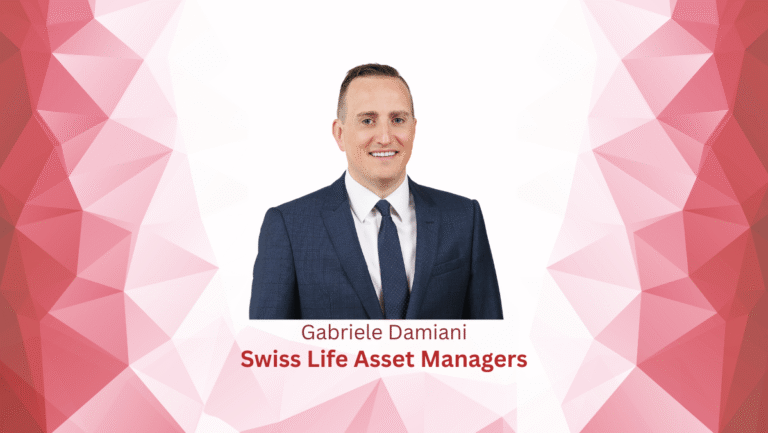By Marie-Laure Mounguia, EY and co-chair of LPEA Private Debt technical committee, Emilie Huyghues Despointes, MV Credit, Billyana Kuncheva, MV Credit, Julie Schleich, Permira Credit, and Vincent Lemaître, Tikehau Capital as published in Insight Out #28.
Sustainability-linked loans (SLLs) are debt instruments that provide the potential to drive change through financial incentives, aiding borrowers in their sustainability goals. Their popularity is on the rise as evidenced in the latest UN PRI survey of private debt market participants[i], which states that “where SLLs were issued and offered, almost 48% of borrowers accepted the offering. LPs are also supportive, with 53% having had discussions with GPs to include SLLs in direct lending practices and 58% believing SLLs enhance the structure of a transaction.” The increased appeal in sustainability-linked financing in the private debt market can be explained by many factors, such as the growing interest in Environmental, Social and corporate Governance (ESG) issues from all stakeholders, but also by the growing conviction that ESG – including the related risks and opportunities – can positively or negatively affect the long-term financial performance of borrowers. Now that SLLs have become part of transition solutions, are they the future of sustainable financing for private debt?
How does a sustainability-linked loan work?
Definition
ESG-linked (or equivalently termed sustainability-linked) loans are general purpose loans with terms that are contractually tied to the borrower’s ESG performance.
The catalyst for the ascent of SLLs can be traced back to the introduction of the Sustainability-Linked Loan Principles (SLLPs) in March 2019, a collaborative effort by the Loan Market Association (LMA[i]), the Loan Syndications and Trading Association (LSTA), and the Asia Pacific Loan Market Association (APLMA). According to Norton Rose Fulbright[ii], “the SLLPs established a framework for the market and provided clear directives on the minimal requirements for a loan to qualify for the sustainability-linked loan designation.” Notably, organizations supporting these SLLPs possess a global reach, which is a promising sign for their broader adoption.
The SLLPs delineate sustainability-linked loans as various forms of loan instruments designed to motivate borrowers to attain ambitious, pre-established Sustainability Performance Targets (SPTs). These targets include Key Performance Indicators (KPIs) that aim to improve the borrower’s sustainability profile.
In contrast to the obligatory allocation of funds for qualified green projects as with green loans, SLLs are general purpose loans. Consequently, green loans now constitute a smaller segment of the market, primarily due to the advantages and relative adaptability of SLLs, which can be applied across a broader range of industries and applications.
SLLs provide an incentive for borrowers to transition towards more sustainable operations, by tethering the cost of debt to the ESG KPIs as outlined in the loan agreement. Typically, this is accomplished through a pricing mechanism referred to as an “ESG ratchet.” This involves periodic upward or downward adjustments to the credit margin, based on the borrower’s performance via predetermined SPTs. In essence, if the borrower attains their ESG targets, lenders reduce the cost of their debt and vice versa, to adequately reflect the credit risk.
Illustrative example
Example[iv] – Lender 1 grants an SLL to Company A operating in the alloy industry with downward and upward margin adjustment.
While market standards and documentary methods for determining ESG criteria, margin adjustment mechanics, and disclosure standards are still evolving, data reveals that three primary KPIs continue to be the common number for SLLs (Source: Reorg research[i]). These KPIs predominantly focus on environmental factors, such as GHG emission reduction and energy consumption, while some also address social and stakeholder concerns like employee health and safety, training, turnover, employee satisfaction, diversity at management level, and gender equality.
Strategies for ESG Ratchet Implementation
Implementing an ESG ratchet might be challenging as it requires strong ESG expertise. Here are some common pitfalls and recommendations derived from the market.
An integrated process
Engaging in sustainability-linked financing involves developing a robust strategy in collaboration with all stakeholders, including the borrower, the lenders, and the equity sponsors. This strategy and its tailored KPIs should be fully integrated into the borrower’s business plan and performance reviews. External experts, such as an ESG consultant or independent auditor, may assist in this process. It is crucial that these instruments are structured by individuals with strong expertise, as they are still relatively recent, not standardized, and mainly operate without international governance. Lenders and equity sponsors can include incentives to align interests. Ultimately, SLLs must demonstrate that they enhance the borrower’s sustainability trajectory.
Incentives
SLLs should be structured to incentivize borrowers to achieve their SPTs. Those SPTs should be bespoke and relevant to the borrower’s overall sustainability strategy. They should be ambitious and meaningful to the borrower’s specific industry and competitive position, as well as measurable and verifiable.
While the prevalence of SLLs and the use of ESG margin ratchets are positive developments, their impact on corporate borrowing costs remains relatively modest. Data indicates that in the first half of 2023, the ESG ratchet margin adjustments mostly ranged from +/- 2.5 bps to +/- 10 bps. In comparison to the public market, this represents a less significant incentive than the typical 25 bps coupon impact observed in the European sustainability-linked bond market (source: Reorg research). A strong commitment to achieving SPTs should coincide with a substantial margin impact for borrowers.
On top of financial incentives, SLLs are a potential opportunity for borrowers to get rewarded for their positive actions, through greater appetite for their credit and potentially better terms. They can also access expertise they don’t necessarily have internally. Private lenders can act as a catalyst for change, plug the gap with their expertise, and act as an advisor on developing a clear transition proposition in collaboration with the senior management and sponsors of the business.
Borrowers can also leverage on SLLs to access new business opportunities as a strong ESG proposition helps companies tap new markets and expand into existing ones. Stakeholders such as employees, suppliers, and clients are looking at the sustainability practices of the company during the course of business. Leaders can earn subsidies and government support, boost employee motivation, attract talent through greater social credibility, and obtain better financial terms, which should result in superior performance and sustainable value creation. It can help them better manage future challenges and enhance their overall business resilience.
Transparency & reporting
Borrowers usually report their sustainability performance to lenders, often annually. Lenders then use this information to evaluate whether the borrower has met predetermined SPTs. The loan documentation specifies disclosure and reporting requirements, which used to be in the form of self-certifications. The market has evolved towards improved disclosure standards that need to be reviewed by an independent third party, such as auditors. In some cases, failure to disclose might lead to a margin penalty, although it generally does not trigger a default. To build up the credibility of these instruments, transparency is a key driver.
Point of view; what market players think of SLLs
The SLL market exhibits a variety of practices, given its relatively recent inception, which results in a lack of consistency and alignment concerning sustainability targets, margin adjustments, and disclosures. There are legitimate concerns about the effectiveness of SLLs in driving the transition, particularly when margin terms have little impact on borrowers. To shed light on this ongoing debate, we’ve engaged with various market participants, including lenders, equity sponsors, and portfolio companies. We’ve gathered insights from Pierre Klemas, Chief Sustainability Officer at Stirling Square Capital Partners, Elin Ljung, Managing Director, Head of Communication & Sustainability at Nordic Capital, Eva Vogt, Partner, Head of ESG and Impact at EMK Capital, Ian Groenen at Rivean Capital (regarding a sponsored deal, XD Connects, a portfolio company of Permira Credit with an ESG margin ratchet implemented), and Alexandra Dumont, Directrice Générale at Lebronze alloys group (“LBA”) (a portfolio company which implemented an ESG ratchet with Tikehau Capital).
Full transcripts of the interviews:
- Interview with Eva Vogt, Partner, Head of ESG and Impact at EMK
- Interview with Elin Ljung, Managing Director, Head of Communication & Sustainability at Nordic Capital
- Interview with Pierre Klemas, Chief Sustainability Officer at Stirling Square Capital Partner
How material should the ESG ratchet be?
Market insights show uncertainty about the ESG ratchet’s materiality for borrowers, in terms of margin adjustments and sustainability targets. Modest margin changes and weak sustainability goals make SLL ineffective and raise questions about engaging time and effort into setting up such a mechanism. Conversely, a robust SLL benefits both financial and non-financial performance.
“As of now, the additional bps attributed to these ratchets [in our portfolio] typically range from 2.5 to 15 bps. However, I share the sentiment that these numbers may not yet be substantial enough to make a significant impact or differentiation for lenders. We do hope to see an increase in the significance of these bps over time.” Pierre Klemas at Stirling Square Capital Partners.
However, if the mechanism becomes overly ambitious or even punitive for the borrower, as with an up-and-down margin ratchet, the borrower and equity sponsor may be reluctant to adopt it.
“There is something to say for having both a bonus and malus component […] but […] if you start talking about penalty, managers might become less invested in putting the margin ratchet in place, which could lead to a missed opportunity.” Ian Groenen at Rivean Capital about XD Connects deal
“We did not have a two-way rachet. […] If you have a one-way rachet, you only stand to gain, and this encourages you to set more ambitious targets.” Eva Vogt at EMK Capital
Striking the right balance is vital as SLLs compete with other incentives which might be more favourable to borrowers and equity sponsors. These alternatives include ESG KPI-linked management remuneration, equity sponsor-driven ESG roadmaps, and deal teams incentivized by portfolio company ESG KPIs.
“We don’t integrate easily accomplished ESG ratchets in every financing that we make, but rather in cases where it’s beneficial for the company and creditors to improve financial terms and drive sustainable change.” Elin Ljung at Nordic Capital
ESG in the C-Suite agenda
An advantage of SLLs is that sustainability inevitably becomes a key topic for company management. The journey to achieving SPTs becomes an integral part of the portfolio company’s overall plan. Pierre Klemas at Stirling Square Capital Partners shared, “ESG ratchets are valuable as they create an additional layer of accountability and engagement, involving the CFO and often leading to more interactions with senior management. This dynamic, in my view, is a positive development, particularly at the scale we operate. When ESG ratchets are in place, I find myself in more frequent discussions with CFOs, which I find truly valuable.”
For Nordic Capital, Elin Ljung explained that it depends on the case. “We have an ESG ratchet for one of our genuinely green cases, which has high ESG standards and KPIs in place already. It’s fully integrated in the business evaluation plan. They wanted to set ESG ratchets on their financing and knew the kind of KPIs that are most important. In another investment, to make sure that the sustainable transformation and growth targets aligned, we agreed together with the debt providers that this is done in a sustainable way by setting engaging, ambitious targets with other kinds of thresholds.” And she added, “You shouldn’t underestimate the incentives of implementing ESG ratchets on financing, meaning regular reminders of ESG scores and KPI performance, not least within PE.“
Alexandra Dumont at LBA, an industrial group specialized in the production of semi-finished and finished products in technical high-performance copper and nickel, confirmed that the real added value of having SLLs is that the company is engaged not only in financial performance, but it must also report on ESG with sustainability metrics monitored by management. A concrete example of this is how the SLL has helped accelerate LBA’s transition on water.
“For mid-market companies, the opportunity presented by an ESG margin ratchet can definitely have a positive contribution to the overall ESG discussion. At XD Connects, however, it’s been a key component of the company’s growth strategy for quite some time and therefore comprehensive ESG reporting and targets were already in place before any ratchet was considered.” Ian Groenen at Rivean Capital
Dialogue is critical when setting up an SLL
Market participants agree: SLL works better when all stakeholders cooperate towards the same goal from the start. Having an open dialogue involving the company’s management, equity sponsor, and lenders is key. For Elin Ljung at Nordic Capital “Having that dialogue and joint vision for the company is naturally a competitive advantage.” ESG ratchets can help align interests in transforming portfolio companies into more sustainable investments during the equity sponsor’s ownership and bring value to the business. In this process, hiring an external ESG coordinator can be essential in coordinating all parties involved.
“It was fundamental that a Sustainability Coordinator role was established to coordinate the preferences of a group of different stakeholders. This role was adopted by me, and in retrospect I would not do this again as it was extremely time consuming.” reported Eva Vogt at EMK Capital
For the SLL that was put in place at LBA, Alexandra Dumont reported that the cooperation with the lender was key in identifying material KPIs not yet measured by the company. Two out of the four ESG KPIs were suggested by the lender.
Offering an ESG ratchet might be a competitive advantage for lenders in some circumstances
Sustainability is a key focus when lenders meet to negotiate. Equity sponsors usually seek an alignment of values with their partners. However, offering an ESG ratchet typically doesn’t serve as a distinguishing criterion in lender selection, except in specific cases where incorporating ESG criteria into the margin calculation provides more favourable commercial terms for the borrower.
“We had this company with a strong ESG focus, which at the time experienced financial difficulties because of sector downturns. In this case, it made sense for all parties to link ESG performance with debt terms – the creditors made sure that there was a future for the company, and the company got a favourable deal. This is an example of a company that got better loan terms, as traditional loans would have focused more on the company’s volatile financial history and performance rather than future performance.” reported Elin Ljung at Nordic Capital
Is data collection the true weakness of SLL?
The lack of reporting standardization and data collection difficulties are common market challenges. This impedes clear comparisons between companies and may create opportunities for greenwashing. It’s also seen as an added reporting burden for portfolio companies. Lenders can play a pivotal role in addressing these challenges. They help define tailored KPIs suitable for the portfolio company’s context, agree on calculation methodologies, and oversee the reporting process.
“ESG KPI setting used to be relatively unchartered waters not too long ago but is now becoming more standardized as there are more dedicated people both on the portfolio company side but also on the lender side that oversee the process. So, I think there is a role to play for lenders in terms of proposing KPIs that have become the industry standard.” Ian Groenen at Rivean Capital
Alexandra Dumont at LBA confirmed that the lender brings expertise and professionalism in how to implement data collection. In the specific case of GHG emissions, LBA even hired consultants to help them, but not on already well-monitored metrics such water and accident frequency. Sustainability is without a doubt a competitive advantage for LBA. The latest green capex financed by the company only aim at reducing externalities with no direct financial return. However, it remains a challenge to build accurate ESG projections the same way as for financials.
Will SLLs remain or disappear?
The upcoming Corporate Sustainability Reporting Directive (CSRD) is poised to partially resolve issues related to transparency, disclosure standardization, and borrower comparability. By enhancing data reliability, the CSRD may expedite the deployment of SLLs and encourage market participants to opt for higher ESG margins. In the coming years, companies will have no choice but to implement sustainability plans, with a focus on transition. This will necessitate an expansion of their ESG-dedicated teams and an increased demand for ESG experts and guidance.
Step by step, sustainability should be fully integrated into the value creation chain and risk management of any deal. In the same way, ESG criteria should impact the valuation of an equity participation and should be seamlessly integrated into the risk pricing of a debt instrument. The notion that a separation exists between financial and non-financial performance should be dispelled. This division is counterproductive, as it tends to pit one against the other, while recent market feedback shows that both are integral to value creation when well-integrated into business plans from the start.
This is where SLL comes into play. By tethering ESG targets to the yield of a debt instrument, it paves the way for the full integration of non-financial data into risk pricing within the market. As the market matures and systematically incorporates ESG into risk assessment, SLLs may no longer be necessary. It serves as a transitional mechanism that ideally should fade away, with the goal of integrating ESG data into our financial market outlook to enhance overall economic stability.
[i] UN PRI ESG incorporation in Direct Lending – A Guide for Private Debt investors – September 2023
[ii] https://www.lma.eu.com/sustainable-lending/documents#sustainabilitylinked-loan-principles140
[iii] https://www.nortonrosefulbright.com/en/knowledge/publications/3ff84c08/the-rise-of-sustainability-linked-loans
[iv] Disclaimer: those illustrative examples are fictive and do not represent any best practices nor any market averages.
[v] https://reorg.com/2022-european-sustainability-linked-loans-wrap/ and https://reorg.com/blog-post/h1-2023-european-sustainability-linked-bonds-wrap/
[vi] FranceInvest Best Practice Guide for Private Debt – Sustainability-linked financing






